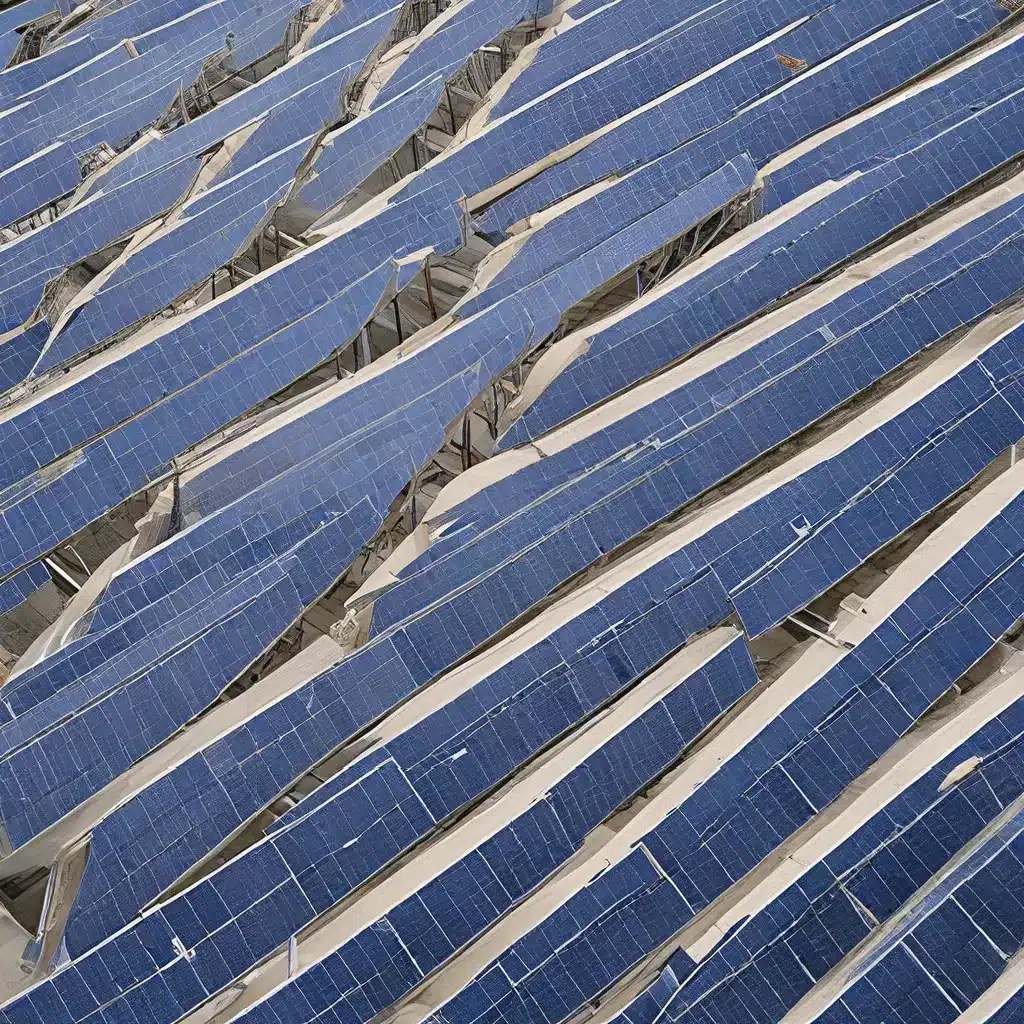
As an avid proponent of renewable energy solutions, I’ve long been fascinated by the immense potential of integrating these technologies into our built environments. The idea of harnessing the power of the sun, wind, and other natural resources to power our homes, offices, and public spaces has always struck me as a revolutionary concept – one that holds the key to a more sustainable, environmentally-conscious future.
Renewable Energy and the Built Environment
Now, more than ever, the need to find innovative ways to reduce our carbon footprint and minimize our reliance on fossil fuels has become a pressing global concern. And what better place to start than with the buildings we inhabit every day? After all, the building sector accounts for nearly 40% of global energy-related CO2 emissions – a staggering statistic that demands our attention.
But the good news is that the renewable energy revolution is well underway, and the possibilities for integration into our built environments are truly exciting. From rooftop solar panels to geothermal heat pumps, the range of renewable technologies available today is both diverse and rapidly evolving. And as the costs of these solutions continue to decline, the financial incentives for building owners and developers to embrace them have never been stronger.
The Benefits of Renewable Energy Integration
Of course, the primary driver behind the push for renewable energy integration in buildings is the environmental impact. By reducing our reliance on fossil fuels and harnessing clean, sustainable sources of power, we can significantly lower greenhouse gas emissions and contribute to the global fight against climate change.
But the benefits extend far beyond just environmental considerations. Integrating renewable energy systems into buildings can also lead to significant cost savings for building owners and occupants over the long term. Solar panels, for example, can dramatically reduce electricity bills, while geothermal systems can provide highly efficient heating and cooling solutions that pay for themselves over time.
Moreover, the incorporation of renewable energy technologies can enhance the value of a building, making it more attractive to potential buyers or tenants. Sustainable design and energy-efficient features are increasingly sought-after by eco-conscious consumers, who are willing to pay a premium for buildings that align with their environmental values.
Overcoming Challenges and Barriers
Of course, the journey towards widespread renewable energy integration in buildings is not without its challenges. One of the primary hurdles is the initial upfront cost of installing these systems, which can be a deterrent for some building owners, especially in the case of smaller or older properties.
However, the financial landscape is rapidly evolving, with a growing number of government incentives, tax credits, and financing solutions available to help offset these costs. Additionally, the long-term savings generated by renewable energy systems can often outweigh the initial investment, making them a savvy financial decision in the long run.
Another challenge is the complexity of integrating renewable technologies into existing building infrastructures. This can require specialized expertise, careful planning, and extensive coordination with contractors, engineers, and local authorities. But as the renewable energy industry continues to mature, the availability of skilled professionals and streamlined installation processes is steadily improving.
The Future of Renewable Energy in Buildings
Despite these obstacles, the future of renewable energy integration in buildings looks increasingly bright. As technological advancements continue to drive down costs and improve efficiency, and as public awareness and demand for sustainable solutions grows, the incentives for building owners and developers to embrace these technologies will only become more compelling.
Moreover, the policy landscape is also evolving, with many governments and municipalities implementing ambitious renewable energy targets and supportive regulatory frameworks to encourage the widespread adoption of these technologies. This includes measures like building codes that mandate renewable energy integration, tax incentives for green building projects, and utility-scale renewable energy programs that make it easier for buildings to access clean power.
As I look to the future, I can’t help but feel a sense of excitement and optimism about the potential of renewable energy integration in buildings. The Firewinder team and I are committed to being at the forefront of this revolution, working tirelessly to develop innovative solutions and empower building owners to embrace the sustainable, cost-effective, and environmentally-friendly power of renewable energy.
After all, the future of our planet depends on our ability to rethink the way we power our built environments. And with the countless benefits of renewable energy integration, I believe that the time to act is now. Who’s ready to join me on this transformative journey?

